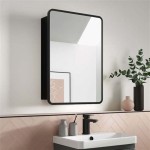How to Screen Mirror Phone to Laptop (Windows 8)
Screen mirroring allows users to display their phone's screen on a larger device, like a laptop, enhancing presentations, gaming, and media consumption. While Windows 8 offered fewer native screen mirroring options compared to later versions, several methods can achieve similar results. This article details various approaches for mirroring a phone screen to a Windows 8 laptop.
1. Using Miracast Adapters/Dongles
Miracast is a wireless technology that allows screen mirroring between devices. While Windows 8.1 natively supports Miracast, Windows 8 often requires a separate Miracast adapter or dongle. These devices plug into the laptop's HDMI port and create a wireless display that the phone can connect to.
To use this method, ensure the phone also supports Miracast (commonly found in Android devices). Plug the Miracast adapter into the laptop's HDMI port and power it on. Then, access the device's settings and look for "Wireless Display," "Cast Screen," or a similar option. Select the Miracast adapter from the list of available devices. The phone's screen should then mirror to the laptop display.
2. DLNA Streaming for Media
DLNA (Digital Living Network Alliance) offers another method for sharing media from a phone to a Windows 8 laptop. While not true screen mirroring, DLNA allows streaming photos, videos, and music over a Wi-Fi network. Windows 8 includes PlayTo functionality, which can receive DLNA streams.
To use DLNA, ensure both the phone and the laptop are connected to the same Wi-Fi network. Open a DLNA-compatible media player app on the phone and select the content to be streamed. Look for a sharing or casting icon within the app and select the Windows 8 laptop from the list of available devices. The selected media will then play on the laptop.
3. Third-Party Screen Mirroring Applications
Numerous third-party applications offer screen mirroring functionality for Windows 8. These applications often create a virtual display on the laptop that the phone can connect to via Wi-Fi. Some popular options include AirDroid, ApowerMirror, and TeamViewer.
To utilize this method, install the chosen application on both the phone and the Windows 8 laptop. Launch the application on both devices and follow the instructions to establish a connection. The phone's screen should then mirror to the laptop through the application's interface.
4. USB Connection for Certain Devices
Some phone manufacturers provide proprietary software that allows screen mirroring through a USB connection. This method often provides lower latency compared to wireless solutions and may offer additional features, such as file transfer and remote control.
To utilize a USB connection for screen mirroring, install the necessary software provided by the phone manufacturer on the Windows 8 laptop. Connect the phone to the laptop using a USB cable. Launch the mirroring software on both devices and follow the on-screen instructions. The phone's screen should then appear on the laptop.
5. Chrome Remote Desktop for Limited Mirroring
While primarily designed for remote access, Chrome Remote Desktop can function as a limited screen mirroring solution. It allows viewing and controlling the phone's screen from the laptop but doesn't offer the same low-latency performance as dedicated mirroring solutions. This is a good option if the primary goal is remote management rather than real-time screen replication.
To use Chrome Remote Desktop, install the Chrome browser and the Chrome Remote Desktop extension on both devices. Configure the phone for remote access using the app. Access the Chrome Remote Desktop extension on the laptop and select the phone to initiate a connection. The phone's screen will then be displayed within a Chrome window on the laptop.
6. Consider Upgrading to Windows 8.1 for Native Miracast
If Miracast is the preferred mirroring method, consider upgrading the laptop to Windows 8.1. This version offers native Miracast support, eliminating the need for external adapters or dongles. The upgrade process can typically be performed through Windows Update.
After upgrading to Windows 8.1, Miracast functionality becomes integrated into the system. Simply enable "Wireless Display" from the Devices charm or the Project menu. The laptop will scan for available Miracast devices, including compatible phones. Selecting the phone initiates the mirroring connection.
7. Verify Hardware and Software Compatibility
Before attempting any screen mirroring method, ensure both the phone and the Windows 8 laptop support the chosen technology. Verify the phone's operating system version and check for Miracast or DLNA compatibility in its specifications. Similarly, confirm the laptop's hardware and drivers are compatible with the intended method. This will help avoid potential compatibility issues.

How To Cast Mirror Your Android Screen Windows 8 10 Pc

How To Cast Mirror Your Android Screen Windows 8 10 Pc
Use Wireless Screen Mirroring To Display Your Windows 8 1 Computer On The Tv Sony Usa

How To Screen Mirror Your Iphone A Windows Pc

How To Mirror Phone Laptop Full Guide

How To Mirror Iphone Windows Pc Laptop Mac Full Guide

Mirror Cast Android Phone To Windows 7 8 And 10 Scrcpy Mirroring Connect Apowermirror

How To Mirror Phone Laptop Full Guide

5 Ways To Screen Mirror Android Pc Or Laptop New Tech World

How To Mirror Your Iphone Screen On A Computer Pcmag








